Disclosure: This article contains affiliate links. We may earn a commission from purchases at no extra cost to you, which helps our travel content.
When most people think of Hilton Head Island, they picture pristine beaches and golf courses. But as someone who's spent years exploring coastal ecosystems, I can tell you there's a whole other side to this South Carolina gem that's begging to be discovered. Last month, I traded Milan's urban energy for Hilton Head's subtropical charm, determined to uncover adventures that would satisfy both the scientist and thrill-seeker in me. What I found was a natural laboratory perfect for families looking to mix education with excitement. Ready to go beyond the beach towel? Let's dive in!
Kayaking Through Ecological Wonders
The moment my paddle first sliced through the glassy surface of Broad Creek, I knew this wouldn't be an ordinary kayaking experience. Hilton Head's salt marsh ecosystem is essentially a living laboratory – and you're paddling right through it!
I joined a guided eco-tour with Dolphin Head Watersports, where our marine biologist guide transformed what could have been a simple paddle into a fascinating exploration of coastal ecology. As we navigated through narrow channels bordered by towering spartina grass, she pointed out fiddler crabs performing their peculiar mating dances and osprey diving dramatically for fish.
The real magic happens at low tide when the marsh mud reveals itself, teeming with life. This is when you'll want your water shoes – we actually stopped to wade through shallow areas, examining periwinkle snails and feeling the unique texture of marsh mud between our toes (a hit with the kids in our group!).
The perspective from a kayak is unmatched – you're experiencing the island's circulatory system, seeing how water, wildlife, and plant life create this delicate balance. For families with older children (8+), opt for individual kayaks rather than tandems – it gives kids a sense of independence while staying safely within the group.
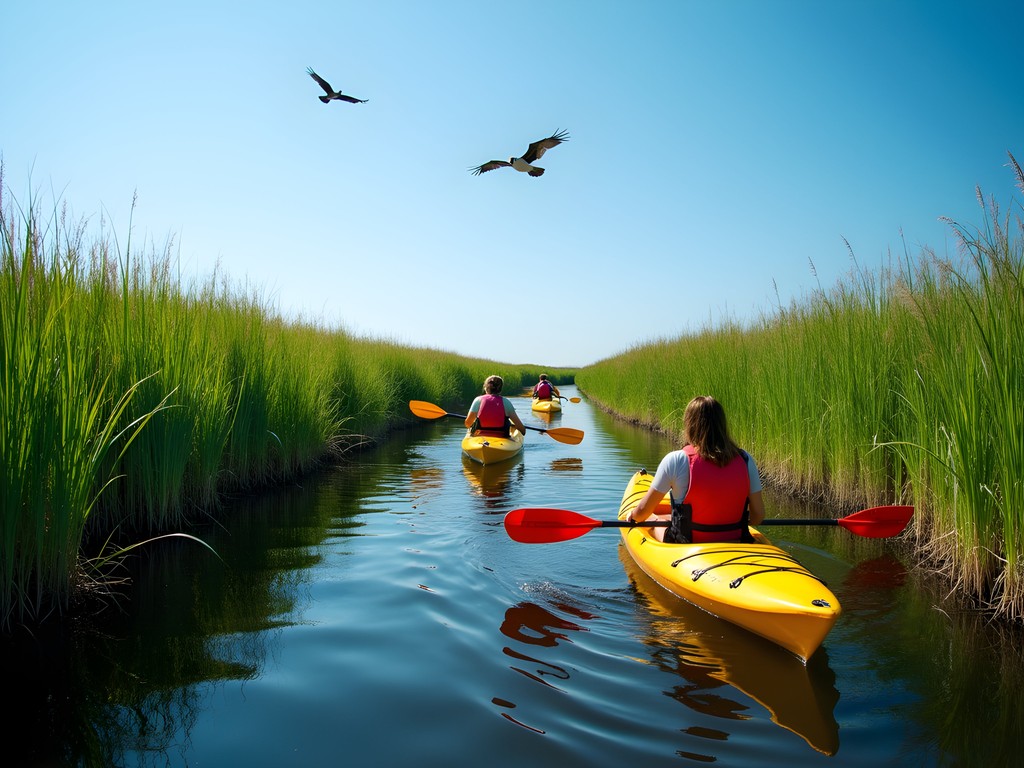
💡 Pro Tips
- Book kayak tours for morning hours when wildlife is most active and temperatures are milder
- Bring a dry bag for phones and cameras – the splashing is real!
- Apply reef-safe sunscreen before heading out – the reflection off water intensifies sun exposure
Dolphin Research Expedition
As both a science communicator and coastal enthusiast, I couldn't pass up the chance to join The Outside Foundation's dolphin research expedition. This isn't your typical tourist dolphin cruise – it's citizen science in action.
The Atlantic Bottlenose dolphins around Hilton Head are part of a resident population with fascinating behavioral patterns. What makes this experience special is that you're not just observing; you're participating in actual research. Our marine biologist captain photographed dorsal fins (each as unique as a human fingerprint) while we helped record behaviors and locations.
The most incredible moment came when we witnessed a hunting technique called strand feeding – where dolphins actually herd fish onto muddy banks and then temporarily beach themselves to feed. It's one of the few places in the world to observe this behavior!
For optimal viewing and photography, I relied on my polarized sunglasses which eliminated water glare completely. The difference was dramatic – I could see straight through the water surface to spot dolphins swimming beneath us.
What impressed me most was how the experience captivated the children on board. The foundation provides each child with a research notebook and identification guides. Watching kids transform into serious marine scientists, carefully recording data and asking insightful questions, was perhaps more impressive than the dolphins themselves.
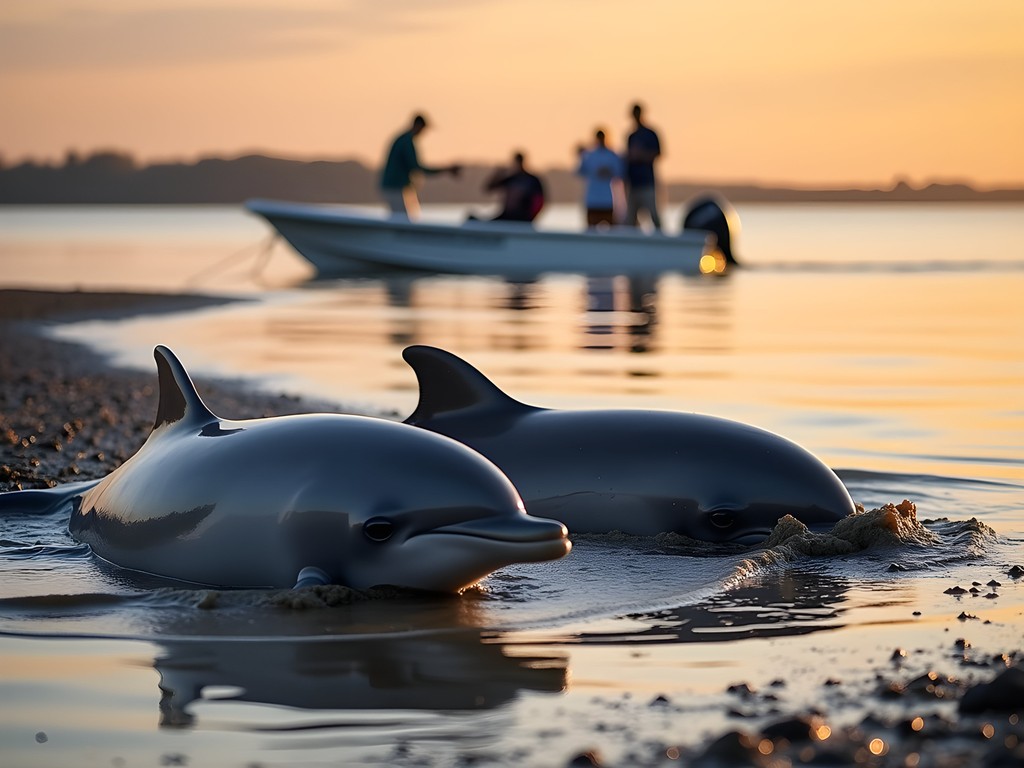
💡 Pro Tips
- Book the early morning expedition when dolphins are most active
- Bring a camera with zoom capability – dolphins may surface at varying distances
- Ask questions! The researchers love sharing their knowledge about local marine life
Coastal Discovery Museum & Interactive Marsh Walks
If I could design the perfect science center for families, it would look a lot like the Coastal Discovery Museum. Housed on the historic 68-acre Honey Horn property, this isn't your typical indoor museum – it's an immersive outdoor classroom.
The highlight for me was the guided marsh walk with naturalist Joe. His enthusiasm was infectious as he helped us deploy a seine net in the shallow waters, revealing an astonishing diversity of marine creatures. Within minutes, we had collected pipefish (relatives of seahorses), juvenile blue crabs, and even a tiny flounder – all carefully examined and released.
The museum's butterfly habitat was another unexpected delight. Walking among native plants buzzing with pollinators, Joe explained the critical relationship between specific butterfly species and their host plants. I watched as children used the field magnifiers provided by the museum to observe caterpillars munching on leaves up close.
What sets this experience apart is how seamlessly it blends history, ecology, and hands-on discovery. In one afternoon, we explored sustainable fishing practices of the Gullah people (descendants of enslaved Africans who maintained strong cultural ties on the Sea Islands), examined a 2000-year-old shell ring, and learned how barrier islands like Hilton Head form and evolve.
For families with diverse interests, this place is gold – there's enough scientific content to satisfy curious minds without overwhelming those who simply want to enjoy the beautiful setting.
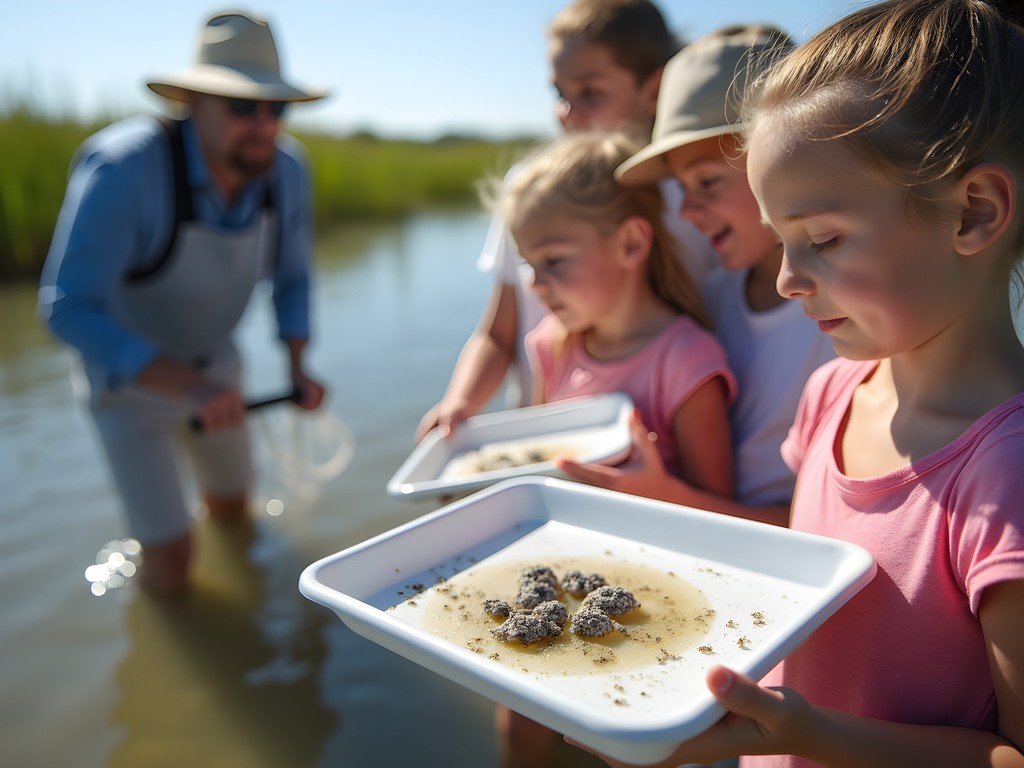
💡 Pro Tips
- Visit on Wednesdays for the special 'Junior Naturalist' program designed specifically for kids 7-12
- Wear closed-toe shoes that can get muddy for marsh walks
- Allow at least 3 hours to fully experience both indoor exhibits and outdoor trails
Ziplining Through Maritime Forest Canopy
Who says science education can't come with an adrenaline rush? ZipLine Hilton Head offers what they call their 'Canopy Tour' – but I'd rename it 'Ecology from 75 Feet Up.'
The course features eight ziplines traversing a pristine maritime forest, but what makes this experience special is the educational component. Our guides weren't just there for safety; they were walking encyclopedias of local ecology. Between heart-pounding zips, we paused on platforms to learn about the critical role of maritime forests as island stabilizers and wildlife corridors.
The perspective from above is transformative. You can actually see the transition zones between different ecosystems – from salt marsh to maritime forest to dune systems. It's like a living topographical map.
Before heading out, I applied my natural bug repellent which proved essential in the dense forest. Unlike chemical repellents, this plant-based formula didn't leave that sticky residue on the harness equipment (something our guides greatly appreciated!).
For families, this adventure hits the sweet spot between educational and exciting. The minimum age is 10, and while my scientific curiosity was satisfied by the ecological information, the kids in our group were simply thrilled to be flying through the trees. The final zip across a marsh lagoon provides a perfect culminating view of the interconnected ecosystems we'd been learning about.

💡 Pro Tips
- Wear closed-toe shoes with good grip – you'll be climbing ladders and standing on platforms
- Book the first morning tour when temperatures are cooler and wildlife more active
- Bring a small backpack with water – the full tour takes about 2 hours
Night Beach Ecology Walk & Sea Turtle Conservation
There's something magical about a beach at night – especially when you're witnessing one of nature's most remarkable life cycles. During summer months (May-August), Hilton Head Island serves as nesting grounds for endangered loggerhead sea turtles, and the Coastal Discovery Museum offers guided night walks that transformed my understanding of these ancient mariners.
Our small group met at 9pm, equipped with special red-filtered headlamps (regular white light can disorient nesting turtles). These headlamps were perfect – bright enough to navigate the beach safely but with a red-light setting that preserves night vision and doesn't disturb wildlife.
Our guide, a sea turtle conservation researcher, explained how female loggerheads return to their natal beaches to lay eggs after a 25-30 year maturation period – a navigational feat that still puzzles scientists. The beach becomes a natural laboratory for discussing magnetoreception, imprinting, and the threats facing these ancient reptiles.
While we weren't lucky enough to witness an actual nesting (it's relatively rare), we did find a fresh nest from the previous night. Our guide demonstrated how researchers identify, mark and protect these sites. The children in our group were enthralled as she explained how temperature determines the sex of hatchlings – a perfect entry point to discuss climate change impacts on marine reptiles.
The walk concluded with a sobering yet hopeful discussion about light pollution. We could clearly see how beachfront home lights can disorient hatchlings, but also how simple solutions (turtle-friendly lighting) can make a difference. For families, this experience offers a perfect blend of adventure, conservation awareness, and hands-on science.
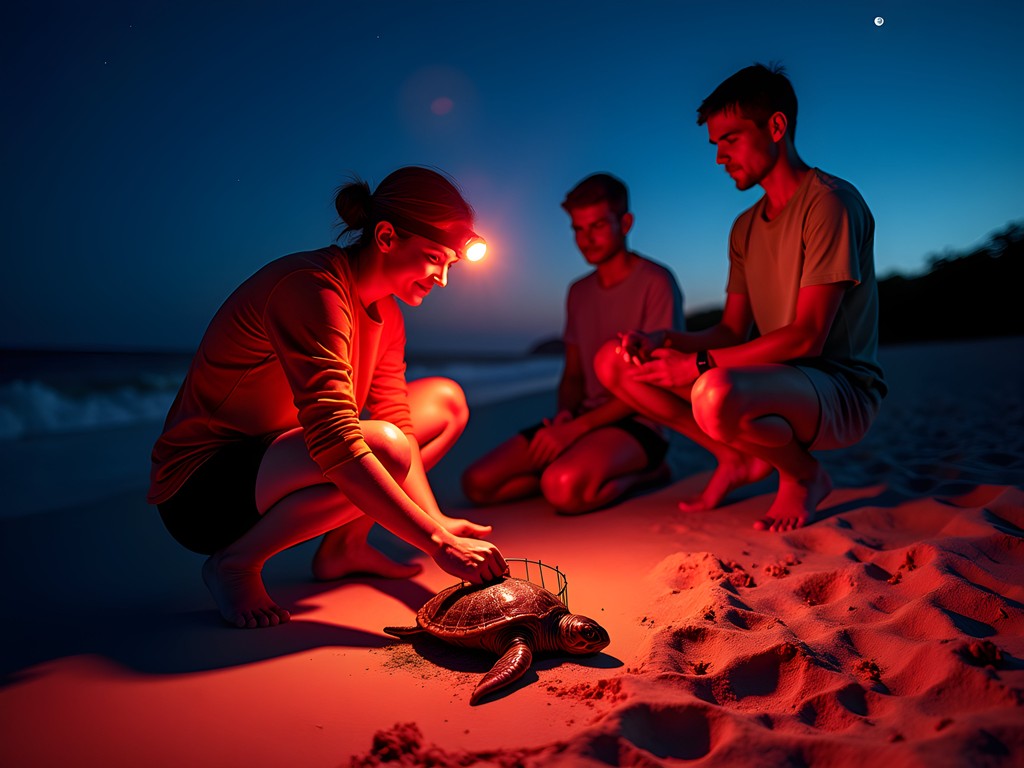
💡 Pro Tips
- Reservations are essential – these walks fill up weeks in advance during peak turtle season
- Wear insect repellent and long pants – sand fleas can be persistent at night
- Leave cameras at home – flash photography is prohibited near potential turtle activity
Guided Bike Tour Through Ecological Zones
With over 60 miles of bike paths, Hilton Head is a cyclist's paradise. But rather than just pedaling aimlessly, I opted for Hilton Head Outfitters' guided ecological bike tour – and discovered why locals call these paths 'nature trails with pavement.'
Equipped with a comfortable hydration backpack (essential for staying hydrated in the summer heat while keeping hands free for biking), our small group set out to traverse multiple ecological zones in a single morning.
What makes this experience special is how it connects seemingly separate environments. We started in the maritime forest, where our guide pointed out resurrection ferns that can lose 97% of their moisture and still survive – a fascinating adaptation to the island's variable conditions. Then we cycled to freshwater ponds where alligators basked in the sun (maintaining a very respectful distance!).
The most illuminating segment took us through residential areas where our guide explained how development practices have evolved to better coexist with natural systems. We observed wildlife corridors, retention ponds designed as habitat, and native landscaping that supports pollinators.
For families, this tour offers flexibility – it's relatively flat terrain with frequent stops, making it manageable for children who are comfortable on bikes. The ecological narrative transforms what could be a simple bike ride into a comprehensive understanding of barrier island dynamics.
My favorite moment came when we stopped at a seemingly ordinary pond. Our guide pulled out a plankton net and collection jars, and suddenly we were conducting impromptu water quality testing, examining microscopic life that serves as indicators of ecosystem health.

💡 Pro Tips
- Book the 9am tour to avoid midday heat and catch more active wildlife
- Bring binoculars for spotting birds and distant wildlife
- Request the extended tour that includes Sea Pines Forest Preserve if you have older children with good cycling stamina
Final Thoughts
Hilton Head Island reveals itself as far more than a beach destination when you're willing to paddle, pedal, and explore beyond the shoreline. What struck me most was how seamlessly adventure and education intertwine here – you're having so much fun that the learning feels effortless.
As a science communicator, I'm always searching for places where natural phenomena become accessible and exciting for all ages. Hilton Head delivers this rare combination through experiences that engage multiple generations simultaneously.
The island operates as a living laboratory where ecological concepts jump from textbook to reality. Children who might struggle to connect with environmental science in a classroom setting light up when they're holding a just-caught seahorse or watching dolphins coordinate a hunting strategy.
So while those pristine beaches certainly warrant your attention, promise me you'll allocate at least half your Hilton Head vacation to these deeper adventures. The memories – and the knowledge – will last far longer than your tan.
Have you discovered other science-focused adventures on Hilton Head? I'd love to hear about your experiences in the comments below!
✨ Key Takeaways
- Hilton Head offers numerous opportunities for hands-on science learning disguised as adventure
- Early morning activities provide optimal wildlife viewing and cooler temperatures
- Booking guided experiences with naturalists transforms ordinary activities into educational opportunities
- The island's diverse ecosystems (maritime forest, salt marsh, beach) allow for multiple distinct adventures within a small geographic area
📋 Practical Information
Best Time to Visit
Late May through early September for warmest water temperatures and turtle nesting season
Budget Estimate
$1500-2500 for a family of four for one week (accommodations, activities, and meals)
Recommended Duration
Minimum 5 days to experience multiple ecosystems and adventures
Difficulty Level
Moderate - Most Activities Require Basic Fitness And Comfort Around Water

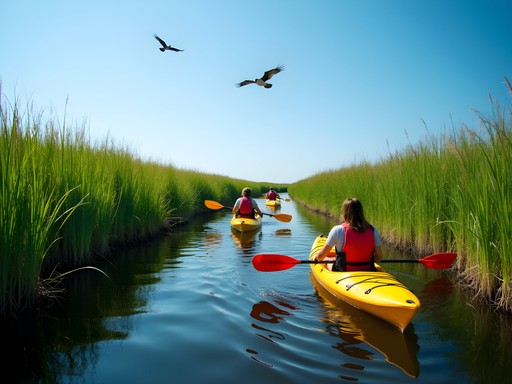
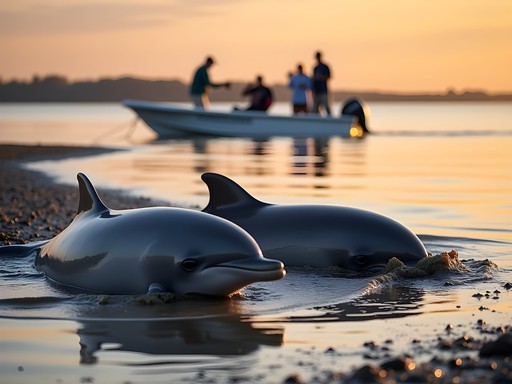
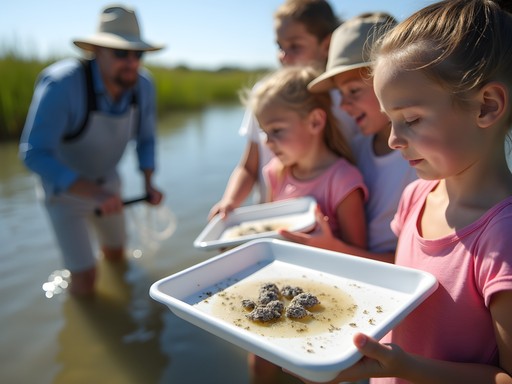
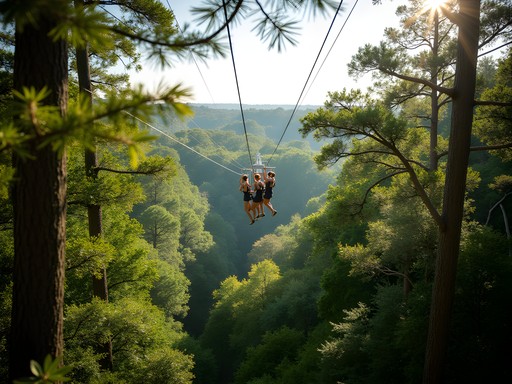




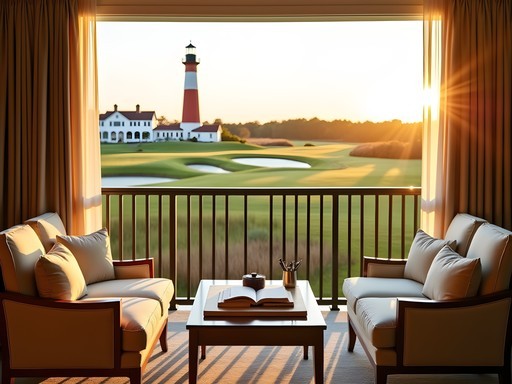


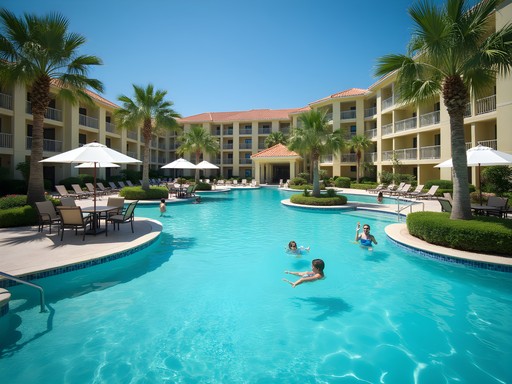
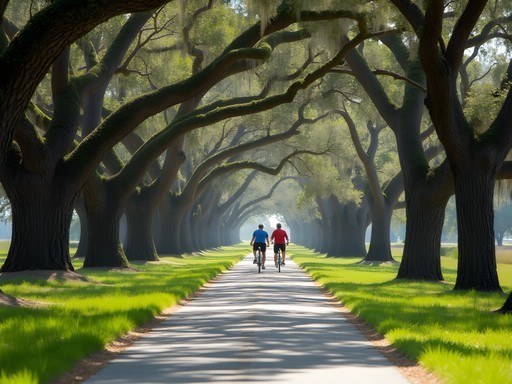
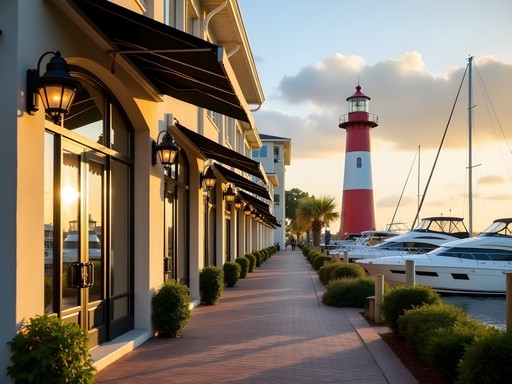
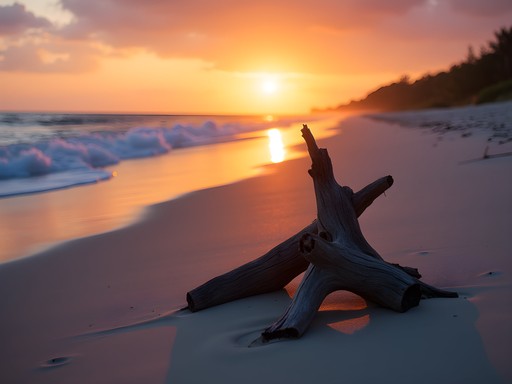
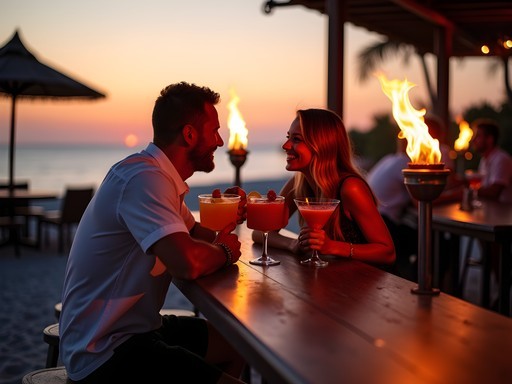
Comments
wanderguide
Just got back from HHI and tried the zipline tour - SO MUCH FUN! Pro tip: wear closed-toe shoes and bring bug spray. The views from the top platforms are incredible - you can see across the whole island!
dreamway
As someone who's visited Hilton Head annually for 15+ years, I'm so glad you're highlighting the ecological side! The maritime forest ziplining is incredible - you get such a unique perspective of the ecosystem. Another hidden gem is the Sea Pines Forest Preserve - miles of trails through untouched wilderness right in the middle of the island. If you're there during turtle nesting season (May-Oct), check out the Turtle Trackers volunteer morning walks. They'll let visitors tag along sometimes if you ask nicely!
Caleb Daniels
Thanks for mentioning the Turtle Trackers! That's a fantastic addition. I've done their walks twice and it's such a special experience. The dedication of those volunteers is incredible.
NatureExplorer
Just got back from Hilton Head and did the Dolphin Research Expedition mentioned in this post. It was incredible! The naturalist on board was so knowledgeable and passionate. We saw several dolphin pods and even witnessed strand feeding behavior which is apparently quite rare to see. The kids were absolutely mesmerized. One tip: go early in the morning when the water is calmer and wildlife is more active. We also brought our own reusable water bottles with ice which was clutch since it got hot quickly on the boat.
summerone
Any of these especially good for families with younger kids (7 and 10)? Heading there for spring break!
Caleb Daniels
The Coastal Discovery Museum is perfect for those ages - they have special programs designed for kids. The dolphin tours are also very family-friendly, and most kayak companies offer tandem kayaks so younger kids can pair with adults. The zipline course has a junior option too!
summerone
Thanks so much! Will definitely check those out.
Taylor Moreau
Excellent article highlighting the natural side of Hilton Head. I've been documenting coastal ecosystems for years, and Hilton Head's salt marshes are among the most vibrant I've encountered. One addition I'd suggest is the night kayaking tours during bioluminescence season (late summer). Watching the water glow with each paddle stroke is otherworldly. The island's conservation efforts are commendable - a model for sustainable tourism that other coastal destinations should follow.
Bryce Diaz
Caleb, you've captured the essence of what makes Hilton Head special beyond the obvious attractions. I've been visiting annually for almost a decade, and the Coastal Discovery Museum's marsh walks completely changed how I see the island. Their master naturalists pointed out things I'd walked past dozens of times without noticing - from spartina grass adaptations to tiny periwinkle snails that climb up stems during high tide. One addition I'd suggest to readers: rent bikes and explore the Sea Pines Forest Preserve early morning. The boardwalks through the wetlands offer incredible wildlife viewing (I've spotted everything from painted buntings to bobcats), and it's so peaceful before the crowds arrive. The 4,000-year-old Shell Ring is fascinating too - tangible evidence of indigenous history that most visitors miss.
BeachBum99
Going to Hilton Head with kids (8 and 11) in November. Are the ziplines suitable for that age? They're pretty adventurous!
Caleb Daniels
Absolutely! ZipLine Hilton Head has a kids' course that's perfect for that age range. My nephew did it at 9 and loved it. They also have weight minimums rather than strict age limits for the main courses.
BeachBum99
Perfect, thanks! Will definitely add this to our itinerary.
summerchamp
Great post! Love seeing the non-touristy side of places.
mountaingal4034
Are any of these activities good for younger kids? We have a 7 and 9 year old coming with us to Hilton Head in November.
Caleb Daniels
Hi there! The Coastal Discovery Museum is perfect for that age group - they have interactive exhibits and kid-friendly marsh walks. Also, many kayak companies offer family tours with tandem kayaks so parents can paddle with younger children. November is actually a great time to visit with kids as the crowds are thinner but the weather is still pleasant!
Taylor Moreau
Excellent piece, Caleb. Having visited Hilton Head multiple times for business conferences, I've often found myself with spare afternoons seeking experiences beyond the typical resort offerings. The Coastal Discovery Museum was indeed a revelation - their guided marsh walks provided fascinating insights into the local ecosystem that I hadn't appreciated before. I would add that the island's extensive bike trail network deserves mention. Renting bicycles and exploring the Sea Pines Forest Preserve offered a wonderful balance of adventure and accessibility. The ancient shell ring there dates back thousands of years and provides a compelling historical perspective that many visitors miss. For those visiting during migration seasons, I'd recommend bringing a quality pair of compact binoculars - the birdwatching opportunities are exceptional, particularly around Pinckney Island National Wildlife Refuge.
islandperson3612
Totally agree about the bike trails! We spent a whole day just cruising around and it was the best way to see everything.
Caleb Daniels
Thanks for mentioning the Sea Pines Forest Preserve, Taylor! You're right - it's another gem that deserved a spot in this list. The shell ring is fascinating and offers such a tangible connection to the island's ancient history.
Venture X
Premium card with 2X miles, $300 travel credit, Priority Pass